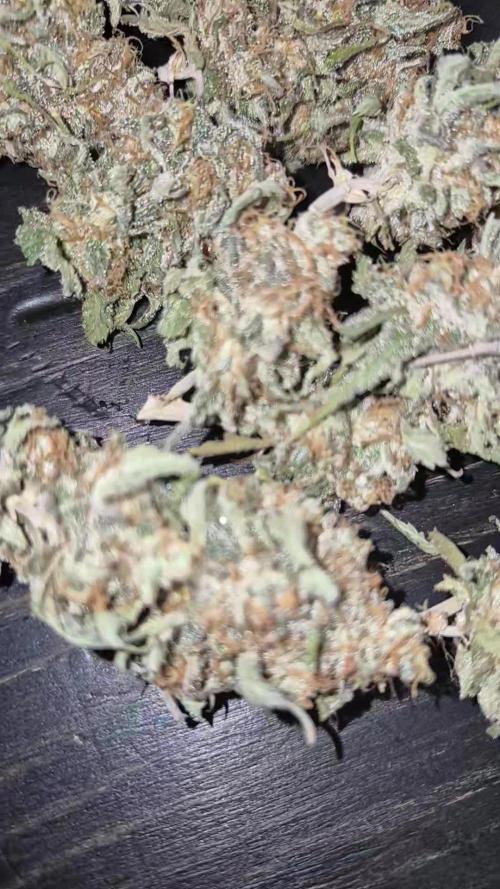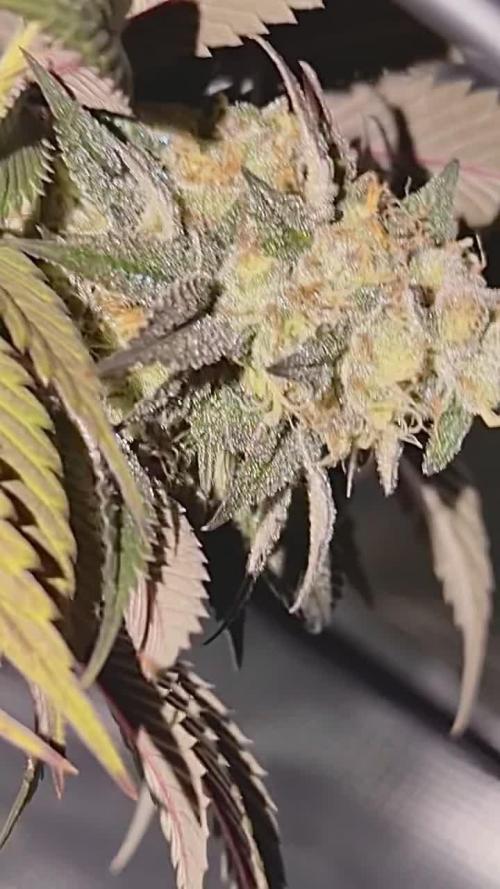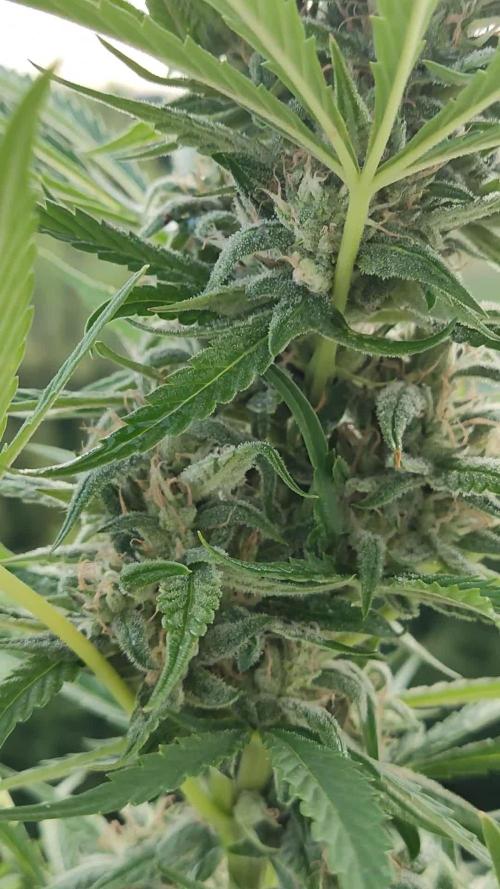The Grow Awards 2026 🏆 

































Likes
Comments
Share


@DivineBuds420
Follow
Die dritte Woche der Blüte startet und die Ladies bekommen ihre Mischung aus Orgatrex und Bactrex.
Auch hier deaktiviere ich rechtzeitig die Bewässerung, gebe erstmal die Hälfte der Nährstoffe und ein paar Tage später die andere Hälfte.
(Die Red Mandarine bekommen die selbe Behandlung, nur eine Woche nach hinten versetzt.)
Die Ladies haben einige Blätter verloren und ein zweites Netz bekommen - das Leben ist ein geben und nehmen.
Die Lampe läuft auf ca 170w Leistung.
Likes
Comments
Share


@GrowDiaries
Follow
GG4 Sherbet Fastflowering by Fast Buds Genetics
Potent, resilient, and easy-to-grow Fastflowering monster. 27% THC that’ll hypnotize your taste buds.
: 'Highigan' (from Instagram & YouTube)
Likes
28
Share


@basementgrown
Follow
Had a lot of fun growing these girls. They went through a lot off the bat due to my inexperience. Learned a lot during this run and it was extremely rewarding to nurse them back to health. I am very pleased with this grow for it being my first run. I had no expectations as I am just starting to learn and want nothing more than to acquire knowledge. The quality and yields will come once I get more dialed in. Once these girls got healthy they had no problems for the whole grow. I am already planning improvements for future systems and am extremely excited to continue on my grow journey. Thanks to all who helped me out.
Likes
7
Share


@balansa
Follow
I flushed my monster plant we are starting late flowering so i wanna make sure that there is no nutrient build up. And to make sure that shes gonna end up like a Bomb. Smell is good but not too strong. So the plant is perfect i have nothing to say
Likes
Comments
Share


@Crwfz1
Follow
The girl came out great fat dense buds and boy they are skunky cant wait to taste 😋 was a joy to grow and easy as could be as usual a little slow but decent yield for the second run on that soil time for new stuff next round
Likes
7
Share


@TripleCcannabis
Follow
Strating the germination process for my latest grow. Im growing white Bhutanese by Mandala Seeds. ■ {{ White Bhutanese: 80% Sativa 20% Indica ~ 12 to 14% THC & CBD (Earthy, Fruity, Lemon, Mint, Nutty, Sour, Spicy / Herbal, Sweet)}} Really into cultivating a highly therapeutic strain, which begins with finding something close to what you want to achieve. Fingers crossed 🤞
September 23. In the rock wool she goes.
September 30 Patricia is officially transplanted to her resevoir.
Likes
8
Share


@FrostRailz
Follow
This is the Biggest/Best cannabis plant on GD with a 4 week veg from seed?
Likes
23
Share


@cadur
Follow
She is reaching the end. Leaves browning off and going well.
Trichomes milky but will wait for 30% amber.
Processing
Likes
12
Share


@Buurman
Follow
The summer really affected my outcome, three weeks of near 40 degrees made most of my buds fluffy and deformed, then the dry room was left open so the humidity was at 30 percent.. 3 days and all my buds were completely dried out. After 4 weeks of curing the taste came back a little but still not the best
Up to the next one ❤️
Likes
43
Share


@Sabac
Follow
Plantas sanitas 11 semanas.
Se ven bien saludables con flores recinosas
Y grandes.
Likes
32
Share


@Platinouuu
Follow
Saludos mis amigos, Decloarando que todo este bien para ustedes y sus familias. Pues este ha sido el proceso desde nacer hasta ya casi cosecvha, creo estar dandoles esta semana y la proxima para quitarlkes el agua y darles 48 horas de oscuridad y finalmente el corte mayor para el disfrute de las cosecha. ersta vez utilice un producto que si no me equivoco es de fox farm para engordar las flores y me resulto muy bueno, este cultivo quise irme limpio lo mayor posible para observar resultados. Me agradan pero siermpre es bueno hacer uso de algunso buenos nutrientes deacuerdo a la etapa que esten, como se vean, lo que identificquemos en cada una de ellas. Es toy muy contento por que el olor es fuerte, tengo toda la casa olorosa, el olor es frutoso, como a Starburst de cherry, muchos terpenos como pueden ver, y de solo tocarlas un poco waooo! la habitacion se explota en esa fragancioa, creeanme que la experriencia es del mas halla. Con esto los dejo amigos, grascias por toooodas esas buenas vibras. una barazo fuerte hermanos, BUENOS HUMOS!
Likes
5
Share


@CannaBossBizz
Follow
Nothing really Changed. Did a topping today. She's A little taller. Love to See her growing ❤️
Likes
39
Share


@MOSS_FIGURE
Follow
Easy for grow, If you haven't tried this strain. You should hurry and buy the seeds.
A link for buy 👉🏻( https://2fast4buds.com/ )
Likes
23
Share


@BedroomGrower
Follow
Day 30: Hello everyone, everything proceeds as expected, but two plants are slightly behind the other six that already show an advanced flowering. On the thirtieth day from germination the plants are 50 to 70 cm tall. As you can see in the last video now that most of the plants are in advanced bloom I have reduced the oscillation of the lamp.
Day 33: In a few days some plants have reached one meter in height, for this reason I moved them trying to create a new SOG. I have also increased the space between the plants in order to give more light to the secondary tops. Oscillation of the lamp further reduced. Water now 10 liters per day for all 12 pots (8 gorillas, 2 advanced cheese and 2 baby cheese). The scent is stronger now, especially when the lamp is turned off.
Day 33: I was around and bought in store 5 Seeds Royal Gorilla Auto and 5 seeds Royal Amnesia Auto to prepare the next cycles and they gave me 2 seeds LSA Lemon Haze Auto. The last seed of Royal Cheese has not germinated and I decided to put a seed of this LSA Lemon Haze on the ground. I don't know the LSA seed bank and if someone has cultivated this strain I would like information about it.
Day 35: All plants have reached or exceeded one meter in height, so I removed all the supports under the pots and moved all the plants. The flowering is now advanced in the first 6 plants, the two remaining Gorillas and the two large Cheese have now started the flowering phase. Lastly, I removed all the underdeveloped branches and some leaves. The last germinate, the LSA Lemon Haze Auto, is added to my cultivation.
Likes
16
Share


@Legendaryseedthumb
Follow
Harvest about a week early to not get any amber thricomes.
The buds look amazing so sugary don’t want them to become amber.
Will press like 70-80% into rosin. So don’t want no ambers’s.
Otherwise this strain was amazing to grow! It was super stable all the time and produced some
Sick buds for me! This shit smells like gods v*gina!
Likes
7
Share


@DayDream07
Follow
Day 37 (from sprout): the last two days, were really hot and the humidity increased to an uncomfortable value of 60-70%. Today I tried to lower the humidity with more ventilation, keeping the tent open and reinstalling a pot cover I had previously removed from the pot in the back. Furthermore, I made sure to give the girls another intense trim.
Likes
39
Share


@SamDo
Follow
Hello, 1ère semaine, on démarre en douceur, les plantes ont 1 jour, une graine de critical+ 2.0 n’a pas germé, mais cela arrive, je l’ai remplacée aujourd’hui.
J’ai mit vidéos du set up de la box et une qui reprend rapidement les conditions de cultures. C’est mon 1er journal, j’attend vos conseils et vos suggestions bienveillantes.. je ferais un update en fin de semaine...
Update fin de semaine fait. Toutes les graines sont cette fois bien sorties!!👍Il y a donc un léger décalage entre elles, mais aucuns soucis. happy grow!!😎






















